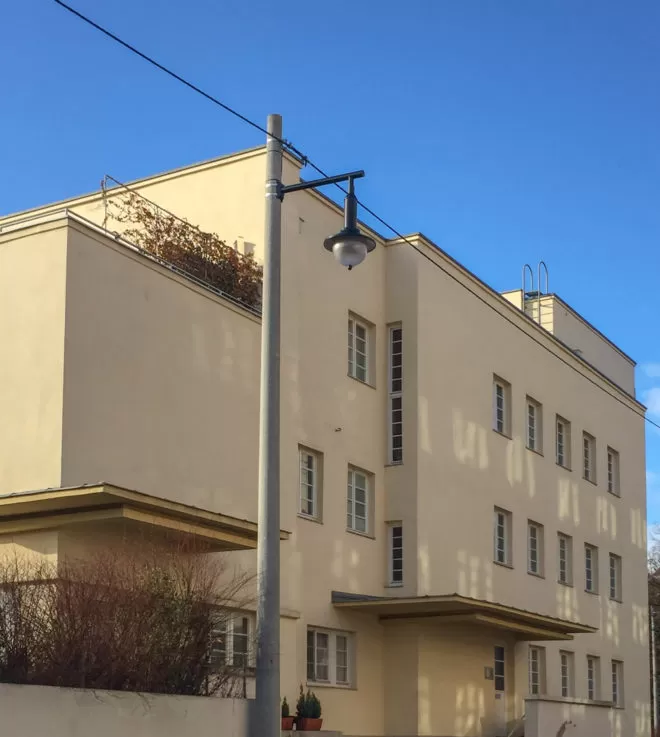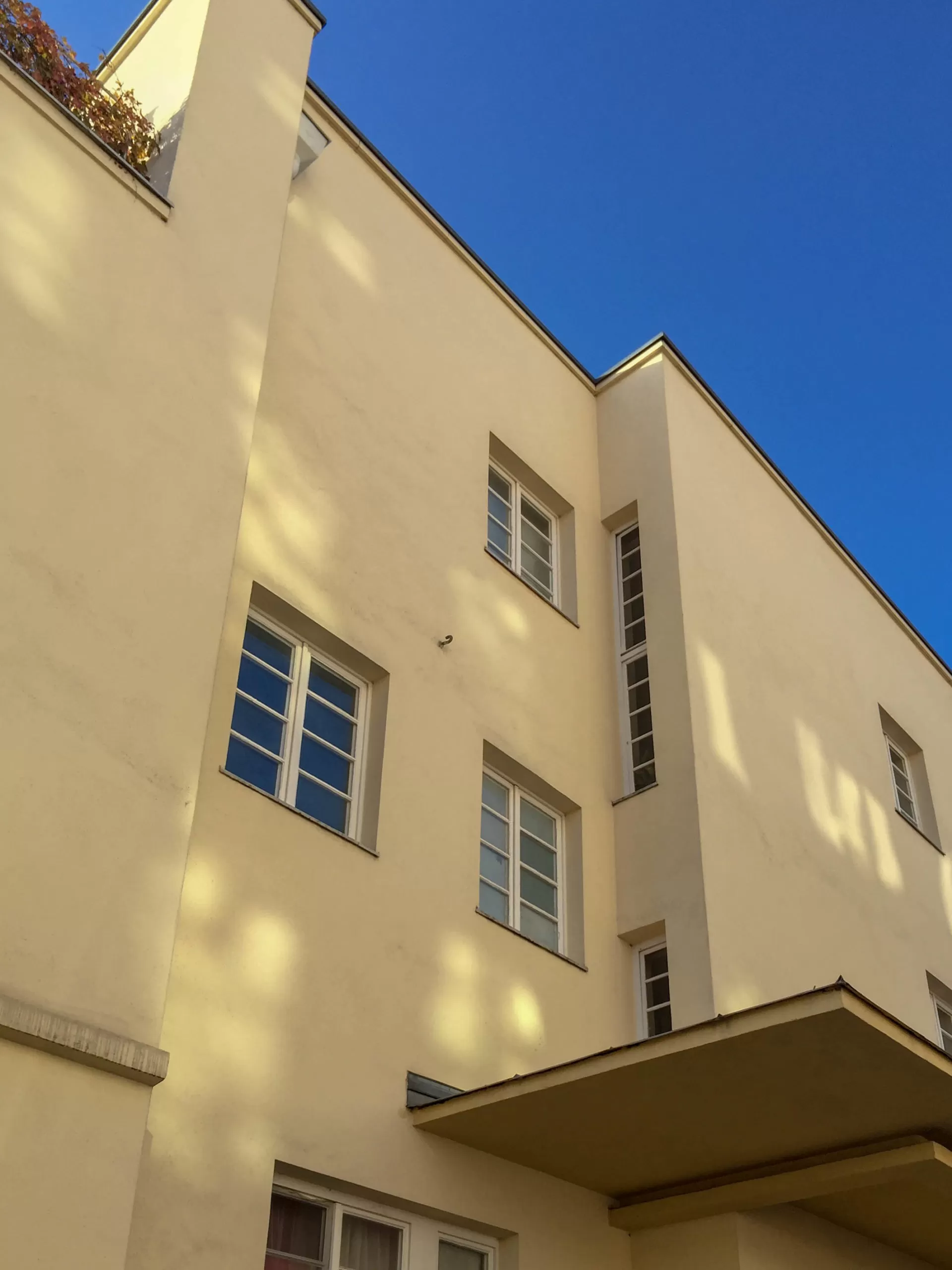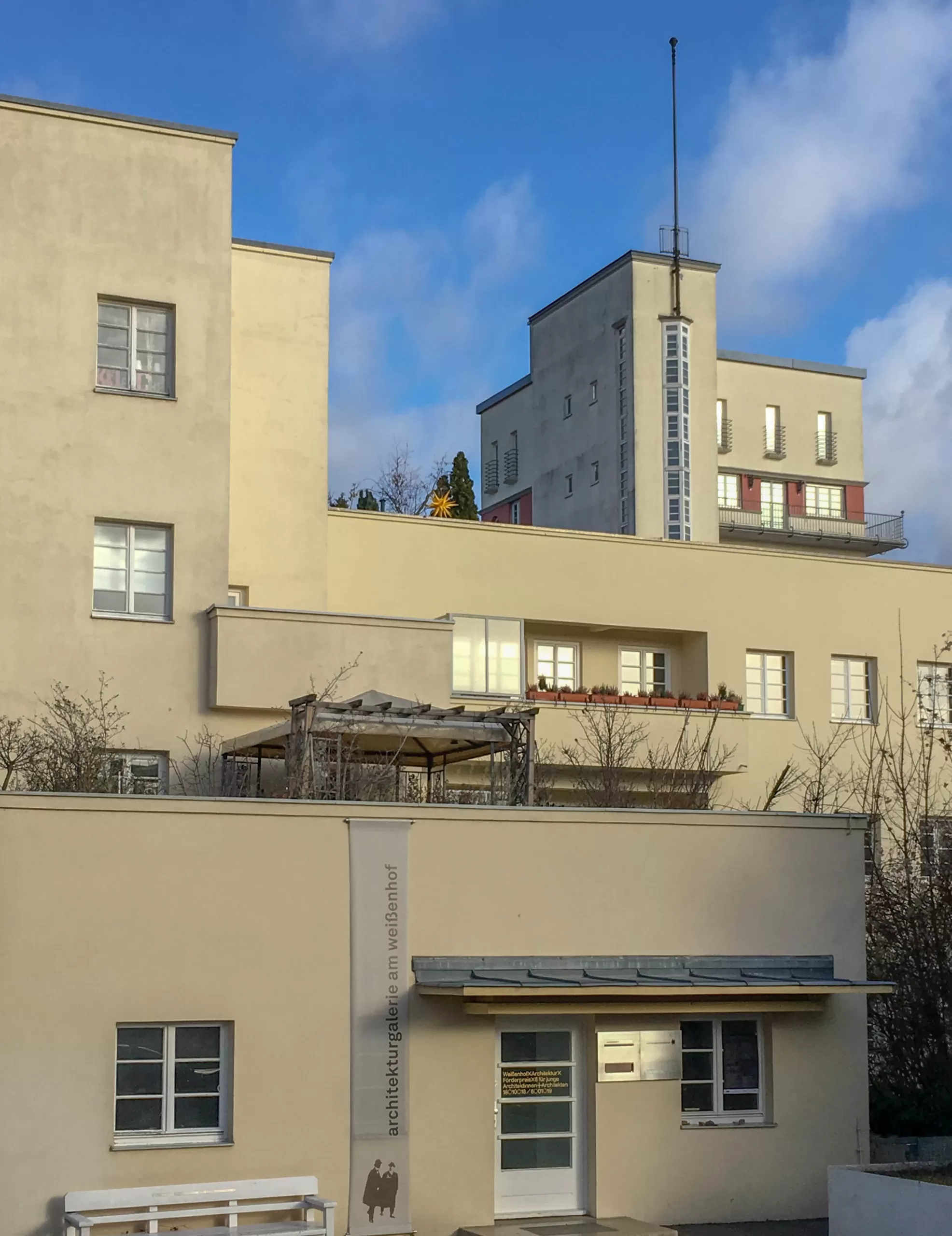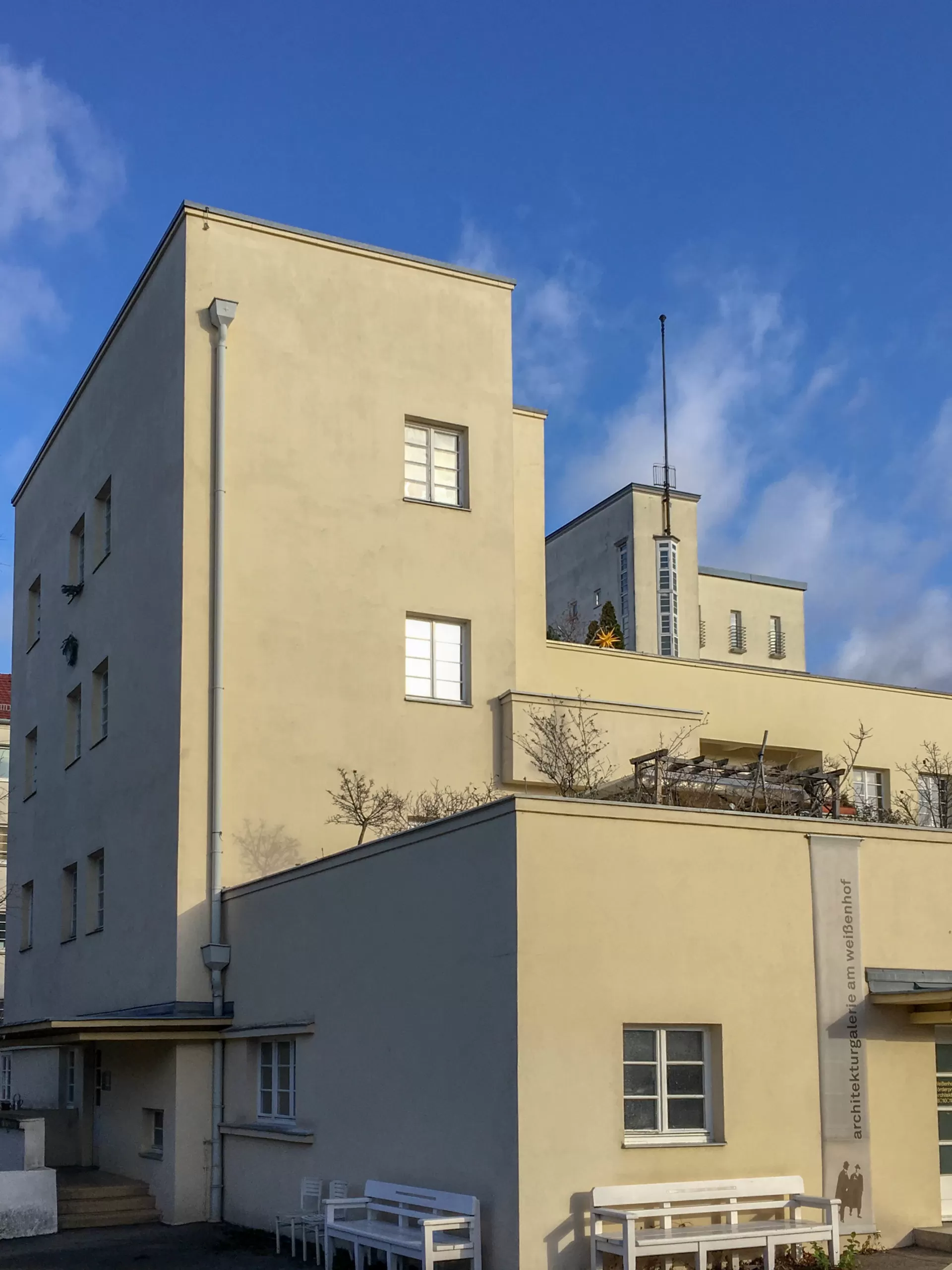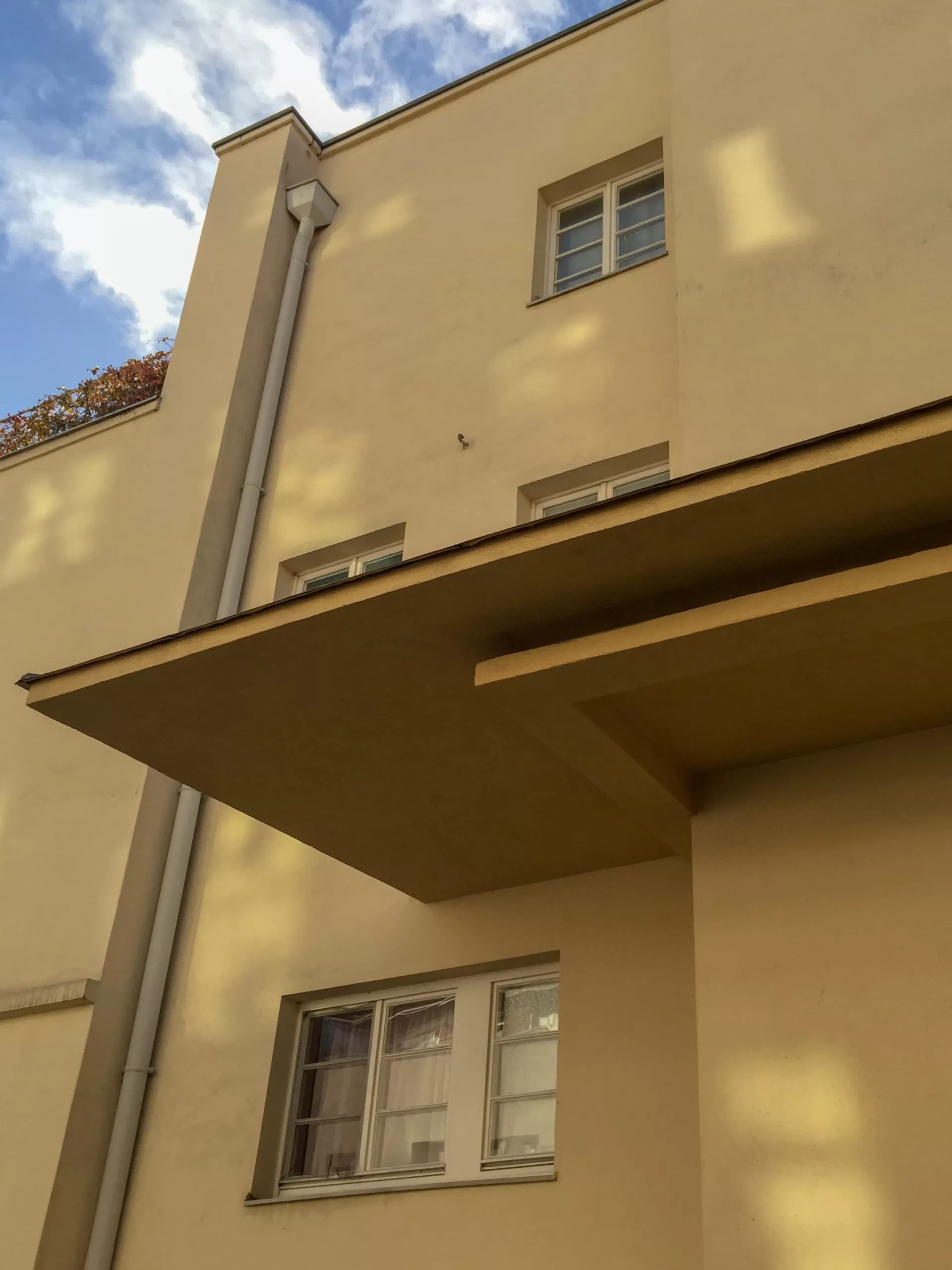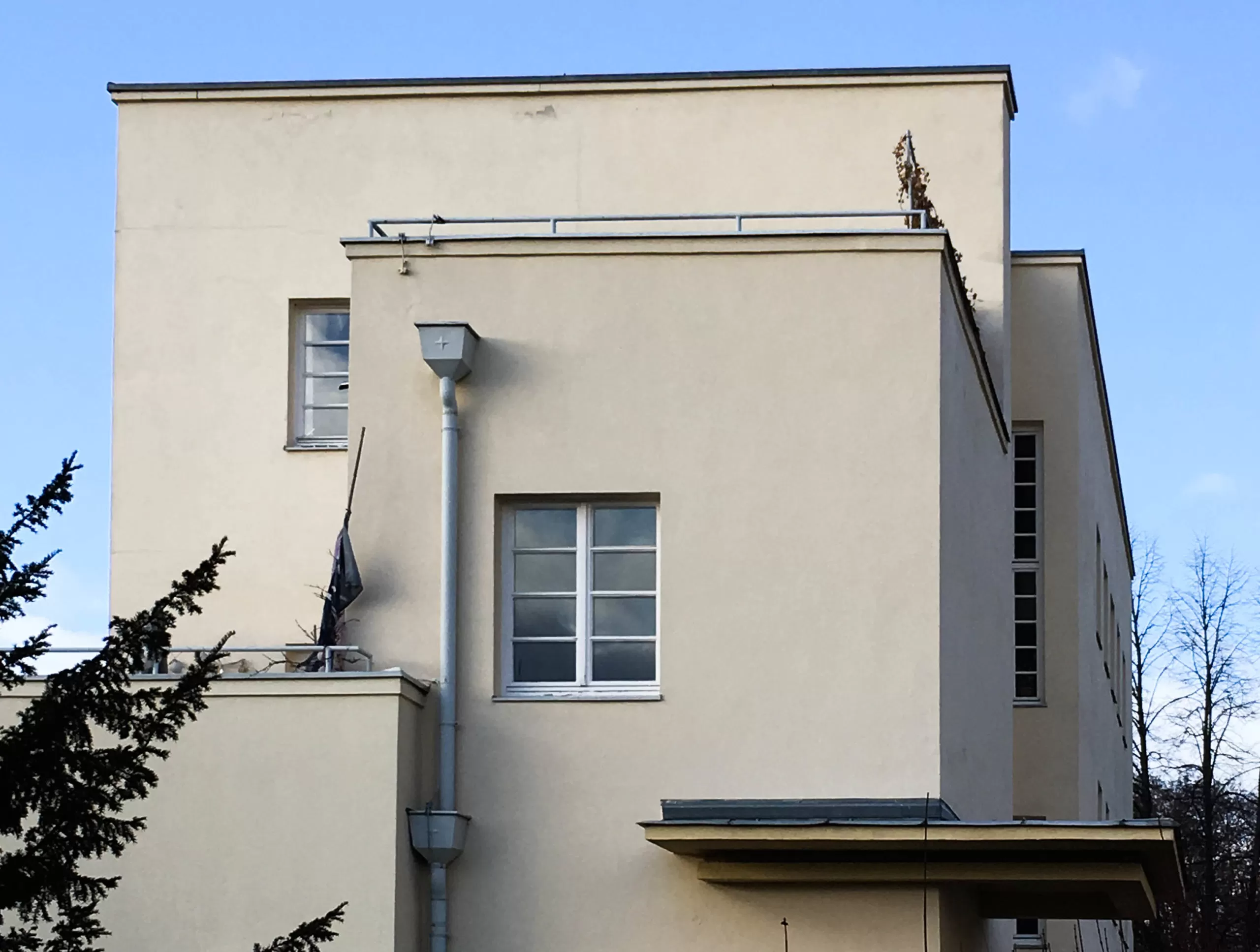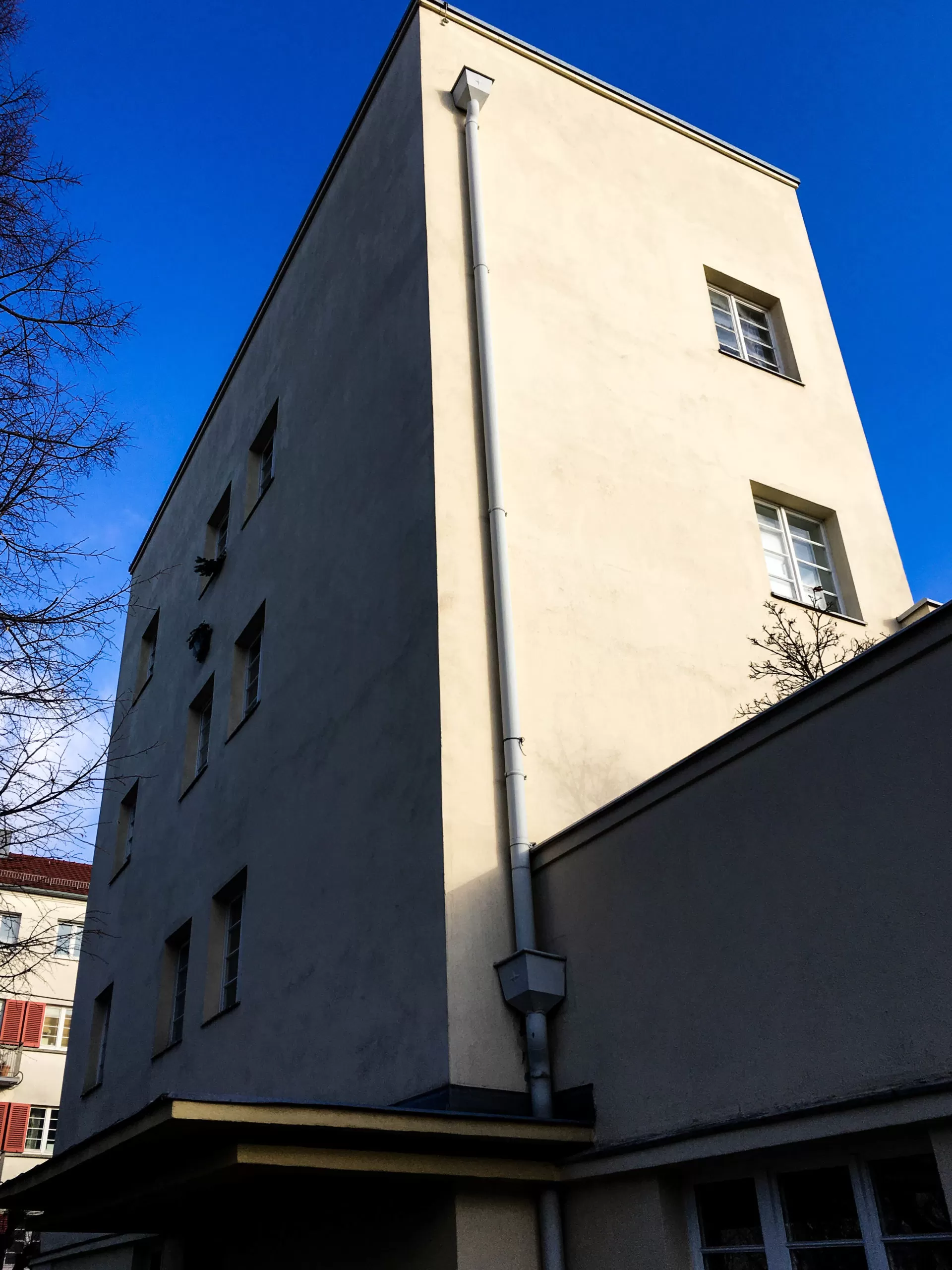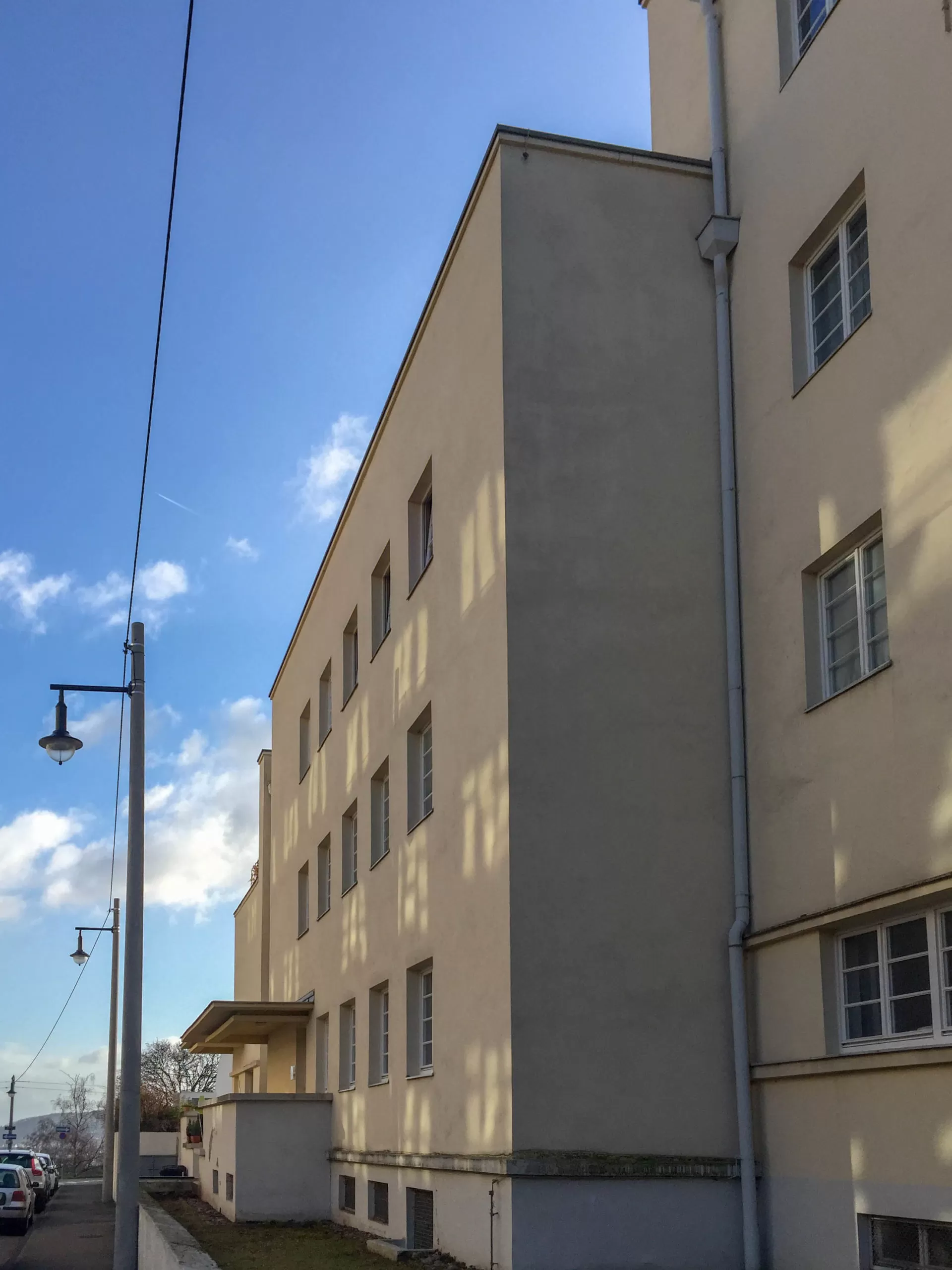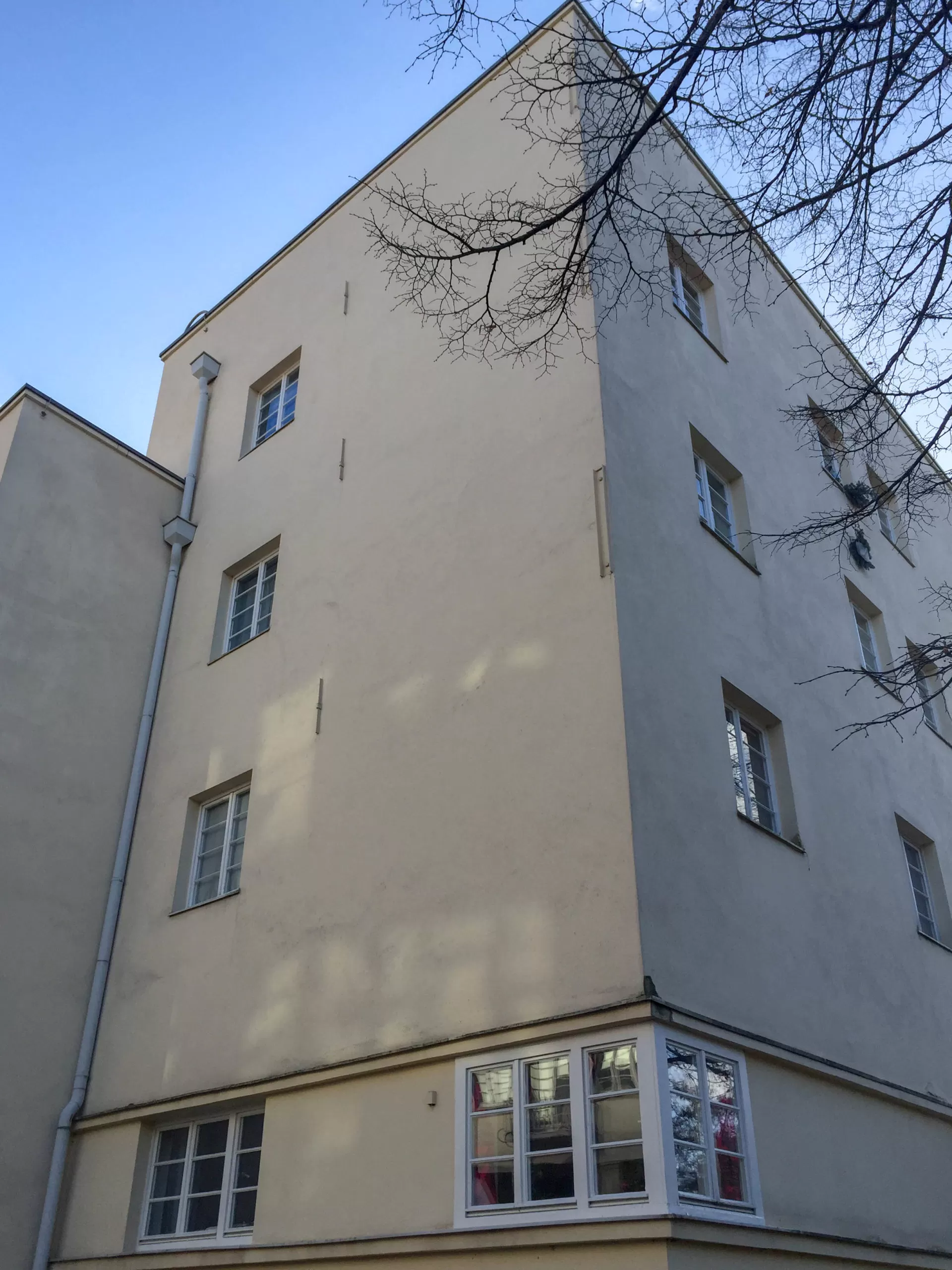1927
Architect: Peter Behrens
Am Weissenhof 30-32, Hölzelweg 3-5, Stuttgart, Germany
Weissenhof Estate
The Weissenhof Estate was built in 1927 as part of the building exhibition “Die Wohnung”, organized by the Deutscher Werkbund and financed by the city of Stuttgart.
During the exhibition, the 33 realized houses could be viewed from the outside and inside. Afterwards, they were rented out by the city.
Seventeen international architects under the artistic direction of Ludwig Mies van der Rohe, presented their innovative designs for modern, healthy, affordable and functional living.
Model Houses
In addition to the model houses in the Weissenhof Estate, there were three other exhibitions on modern building worldwide, interior design and new building materials and constructions.
Within just four months, 500,000 visitors came to see the exhibition, which had a worldwide resonance.
Avantgarde
The Weissenhof Estate showed the then current development of architecture and housing.
A formal coherence was achieved through the avant-garde architectural views of the contributing architects and the specification of flat roofs.
Peter Behrens Terrace House
The up to four-storey residential complex by Peter Behrens consists of four houses with twelve apartments of 54 or 60 square metres each.
The overall structure is stepped in such a way that the flat roof of the lower house forms the terrace of the higher house above.
This type of terrace house was intended to provide access to light and sun and was for Behrens the prototype of the urban residential building.
Bau und Wohnung
In 1927, he wrote about his project in the publication “Bau und Wohnung” (Construction and Housing), which appeared on the occasion of the Werkbund exhibition:
‘The greatest building misery exists in the mass rental houses of the large cities to date. …
The “terrace house” I have designed is a conglomerate of one-story, two-story, three-story and four-story houses, which are inserted into each other in such a way that the flat roof of the lower house always forms the terrace for the higher house behind it.
All the first floor apartments have their open spaces in a front garden separated by a wall from the nearest one.
The first floor is given balconies 2 meters deep, projecting on concrete slabs, while the second floor is given terraces the size of the rooms below by the front wall receding by the depth of the rooms below.
On the third floor, a part of the rooms of the second floor remain as terraces.
Above the third floor of the central wing, a large roof garden of about 144 square meters stretches out, providing a substitute for benefits hoped for from urban open spaces by planting and creating play areas in the inner city.’
Restoration
During the war, the residential complex suffered minor damage. In 1950, gable roofs were erected on individual parts of the building and the terraces were partially built over.
Between 1983 and 1984, the building was renovated in accordance with the preservation order.

